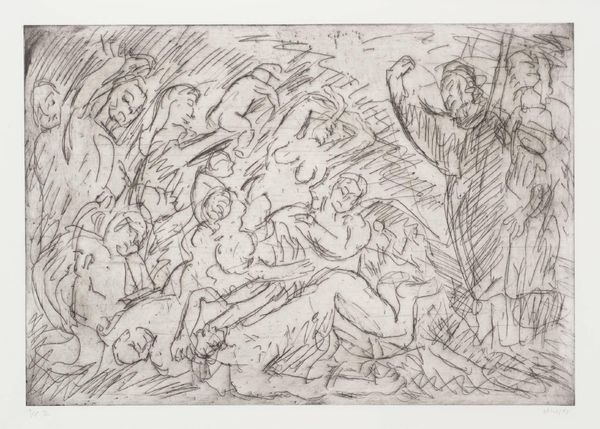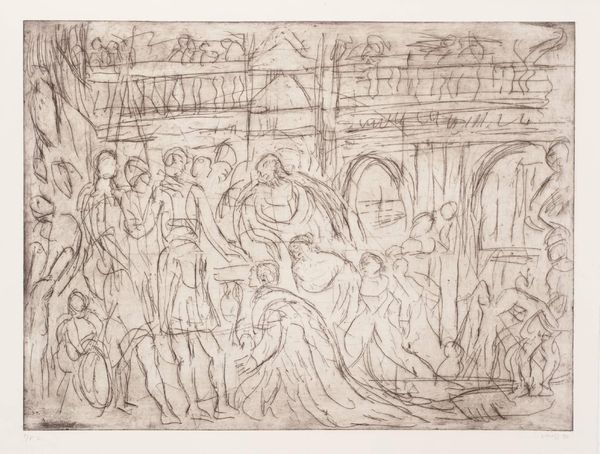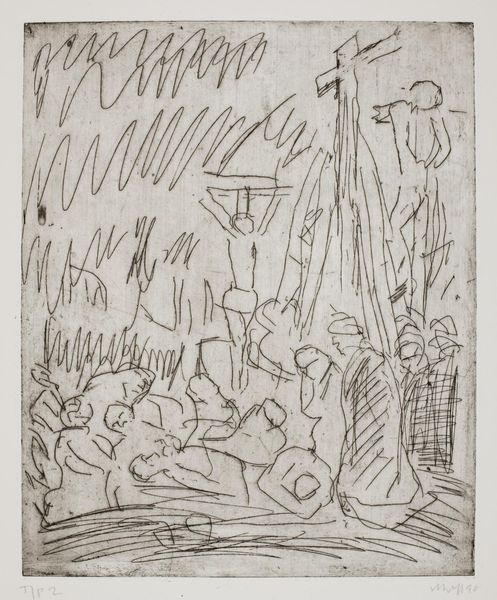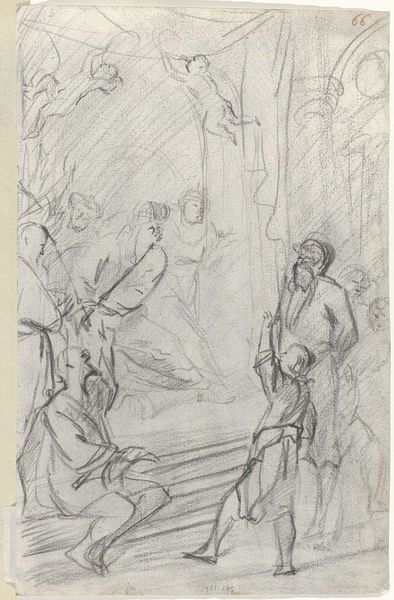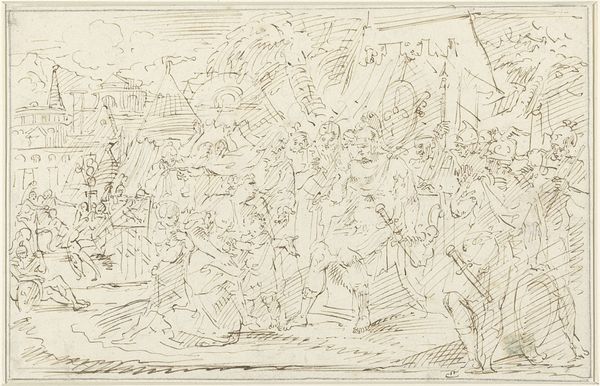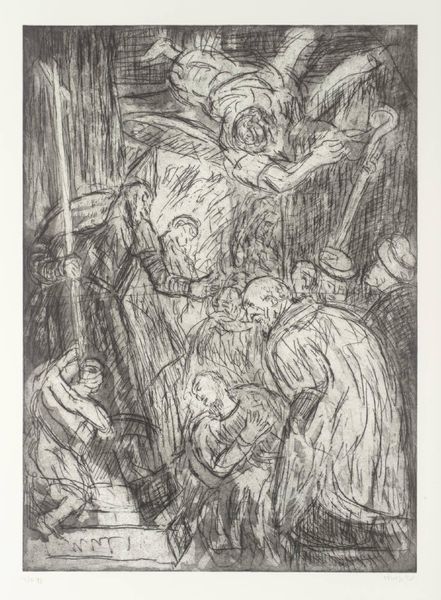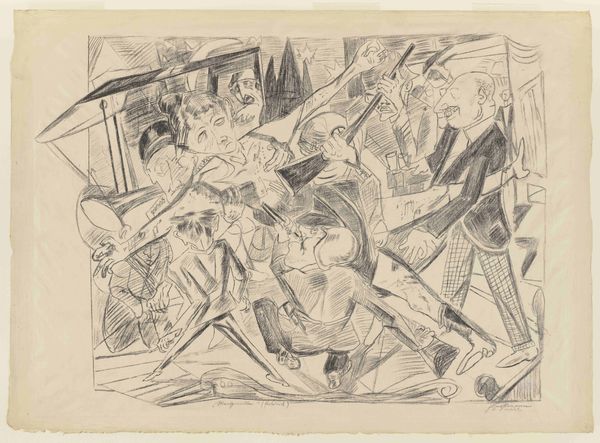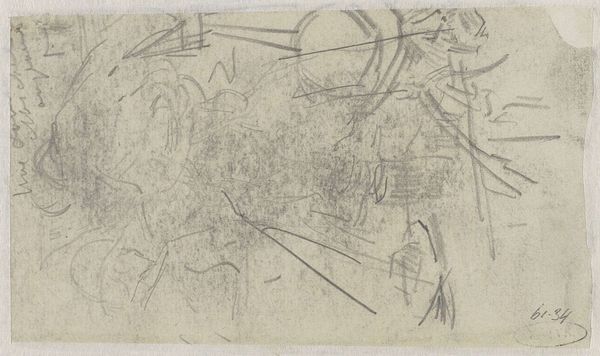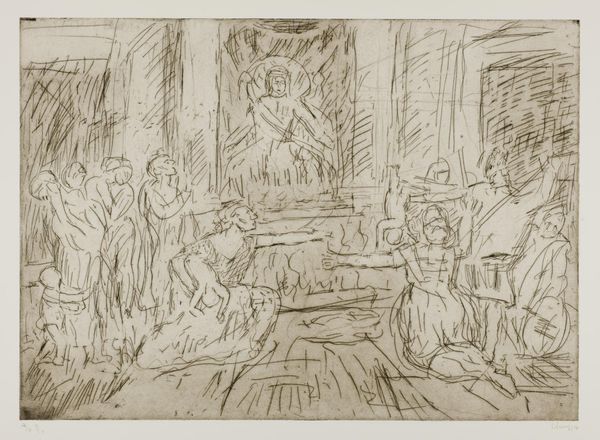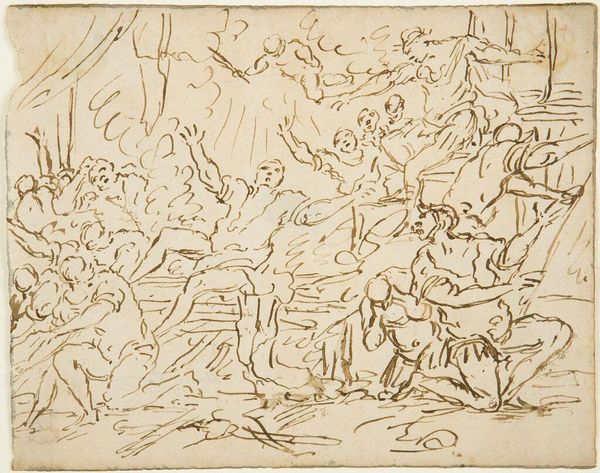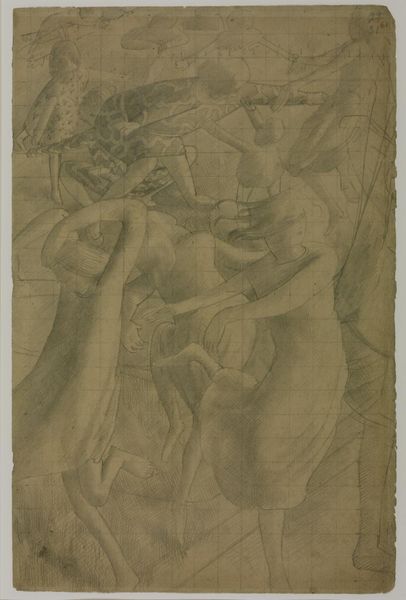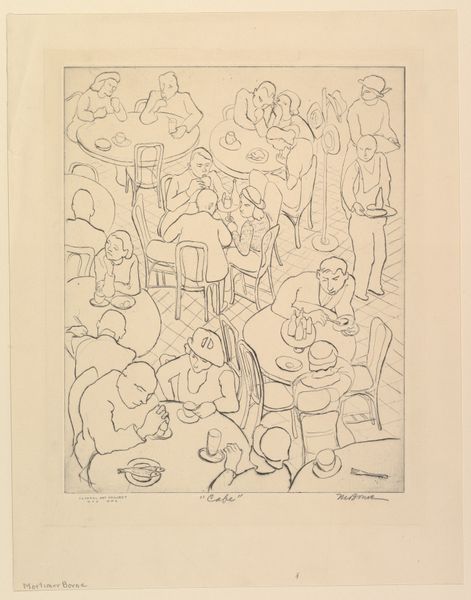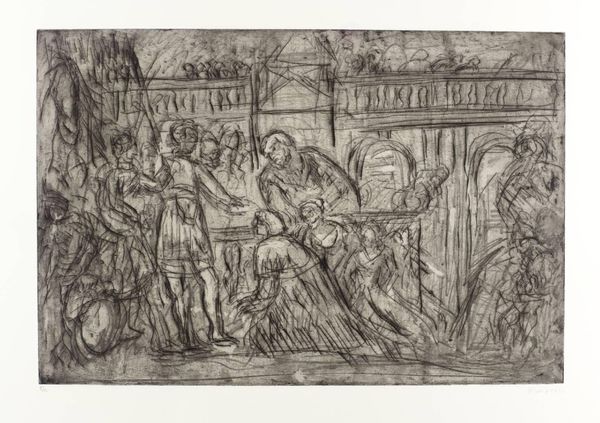
Copyright: © Leon Kossoff | CC-BY-NC-ND 4.0 DEED, Photo: Tate
Curator: Looking at this etching, the stark lines and muted tones give it a haunting quality, wouldn't you agree? Editor: Absolutely. It’s almost ghostly, with figures emerging from and dissolving back into the background. This is Leon Kossoff's "The Adoration of the Kings." Curator: Kossoff, born in 1926, frequently explored religious themes, often filtered through a modernist lens. This particular work, housed here at the Tate, captures a familiar scene, but with an unsettling immediacy. Editor: And there is this idea about the questioning of power. The "kings" seem vulnerable, less about their royal status and more about their shared humanity with the holy family. Curator: It also reflects Kossoff’s engagement with social issues and the human condition, presenting art to challenge the status quo. Editor: This piece prompts us to consider how these traditional narratives can be re-interpreted through a contemporary and relevant framework, reminding us that even ancient stories can speak to modern struggles. Curator: Well said; it’s a powerful demonstration of art's ability to bridge the historical and the contemporary.
Comments
tate 7 months ago
⋮
http://www.tate.org.uk/art/artworks/kossoff-the-adoration-of-the-kings-p11708
Join the conversation
Join millions of artists and users on Artera today and experience the ultimate creative platform.
tate 7 months ago
⋮
This print is one of many etchings executed by Leon Kossoff in response to, and literally in the presence of, oil paintings by old masters; in this case The Adoration of the Kings, 1573, by Paulo Veronese (c.1528-1588), owned by the National Gallery, London. This print was never published as an edition; Tate owns the second trial proof of this etching.
